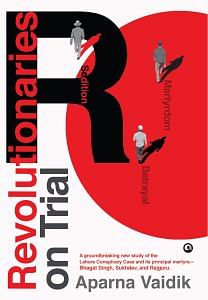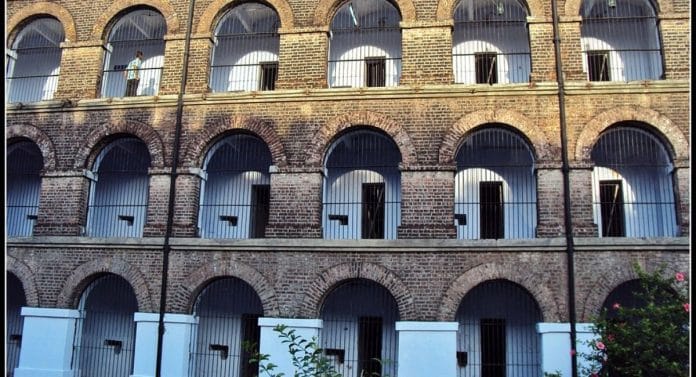Once in its custody, the police used the old game of playing one against the other, intense interrogation, and torture as routine methods to break down the suspects, extract confessions, and to coerce consent for approvement.
Torture was an umbrella term that could take on various forms in the confines of the police interrogation centre. It could include beating, flogging, physical wounding, solitary confinement, sexual violation, sleep deprivation, subjection to verbal abuses, forced standing, dehydration, starvation, death threats, hooding, white noise, and psychological pressure. Torture could also comprise ‘exhaustion exercises’ such as incessant walking, continuous running or jogging with heavy objects, handcuffed push-ups, duck-walk or frog-marching or sliding on stomach like lizards, military drills, and deep knee bends. These were exercises that led to excruciating muscle cramping and physical debilitation of the prisoners.
Torture was different from routine punishment. It was a purposeful set of ‘continuous directed, intentional coercive measures linked in some way to extraction of information or
the modification of attitude’ or to establish a ‘clear and inviolable hierarchy’ or to set of norms to be observed. Above all, torture carried a political significance. It communicated the culture of the incarcerating regime. Unlike hazing or everyday jail punishments,
torture aimed to dehumanize and degrade the individual and was carried out in a space distinct from the ordinary and familiar locale of incarceration. It was ‘symbolically removed’ to special cells, basements, separate buildings, and distant wings, and thus carried within it a kernel of plausible deniability. Given that most people didn’t actually see it happening, its occurrence could be denied.
Also read: When ‘Times of India’ advised the govt to slap sedition charges against Tilak
When it came to the British, stealthiness and secrecy shrouded the acts of torture. The police employed torture despite the Indian Penal Code (1860) having penalized its use and the Indian Evidence Act’s (1872) stipulation that a confession was inadmissible if obtained through coercion. The policemen nevertheless acted as ‘petty sovereigns’ and continued to use torture with impunity. Their actions flew in the face of the British claims that their rule was based on enlightened principles. The official narrative, however, always denied the use of torture or presented it as an aberration (or a one-off incident) or as a result native proclivity for inflicting torture.
When it came to the revolutionaries, the British administrators squarely blamed the former’s retributive ruthlessness towards police officers and the informants from within their ranks. In their view, revolutionaries’ actions were the reason the police resorted to torture. If ever a public exposé of a torture case occurred, the British officials would hurriedly distance themselves from it, especially in front of the publics back home. Denying their complicity in face of ubiquitous and everyday forms of police torture, the British spoke of it as a carry-over from the pre-colonial despotic rule of the Mughals and cast it as a practice that the ‘native’ policemen indulged in.
This generated a popular belief (which later also made its way into historiography) that torture or spectacular violence exercised by the colonial state was limited to major incidents such as Revolt of 1857 or the Jallianwala Bagh Massacre. In fact, notwithstanding the British officialdom’s public disavowal, torture was not an exception but at the heart of the modern disciplinary state systems, colonial or otherwise.
Given that it was the lower caste and the poor who faced the brunt of everyday (and less conspicuous) violence that there was a relative absence of torture reports in the official archives. The police primarily remained busy in guarding the interests of upper caste
and the propertied. The stray incidents of torture that did survive in the official archives were mainly of ones where the victim was upper caste or when a death occurred. The police misconduct was a reality of the colonial state, especially the manner in which
it was constituted and experienced by the people. In using torture, the police were not acting against the law but through it.
They used the law to perpetrate injustice (which included taking bribes, falsely implicating people, not registering FIRs, custodial violence, beating up inmates, torturing witnesses, furthering elites, carrying out social vendetta). There was thus a deep imbrication of fault lines of caste, religion, and gender in the state’s policing and jail system and this, in turn, sustained social conflict at an everyday level. Incidentally most of the policemen assigned the task of torturing the revolutionaries were Muslims. There was a general belief amongst the British officers that the Muslim policemen would not sympathize with the ‘Hindu’ revolutionaries.
In Jaidev’s view: ‘Amooman Musalmaan, wahan Hindu afsar to mujhe dekhne ko nahi mila. Sampradayik bhawanao ko bhi uksane ka kucch praytna karte the taaki Musalman Hindu ke upar zulm kar sakein and Hindu Musalman ke upar zulm karein…. Hum logon ka sharirik yantrana dene ke liye unhone musalman afsar hi rakhe the (Always Muslim, we could not spot any Hindu officer. The aim was to incite communal feelings so that Muslims oppress Hindus and Hindus torture the Muslims…. Only Muslim officers were kept to physically torture us.)’
Most revolutionaries were routinely tortured in the police custody. The police was known to use fear and ‘disorientation’ (where a prisoner got disconnected from his reality) that resulted from torture to get confessions out of them. Solitary confinement was the most common form of torture. The cells were very small with no windows. The door was made of iron bars and had a small courtyard in front that was cordoned off by a wooden door. They could not come out of their cells, talk or meet anyone. Two people would come to give them food. One would prop open the wooden door for the other carrying the food. Once inside they would open the cell door to give the prisoners food and water. Each time the same person would come to deliver it. Jaidev Kapoor recalled how they would get
two foul tasting rotis twice a day (dal or sabzi once in a while) with a small portion of chana in between the meals. He had been put in the cell after having received severe thrashing in
Lahore’s police lock-up and when he fought back the enraged policemen had used batons to beat him.
Shiv Verma related his horrific jail experience in the city of Saharanpur thus: ‘Solitary confinement at that time in Saharanpur was something which cannot be imagined today—below the average level of the jail. And for light, there was only one small ventilation at the top and one small hole at the bottom. The rest of it was dark. Then there was a solid dark gate, with a hole which also was covered with another lid. Every 15 minutes the sentry came, peeped in whether the prisoner was alive or dead and then he walked away. No human voice, no human face to be seen; it was all damp, dingy and dark. For sometime I kept on walking in that. Then I thought of lying down. As soon as I lay down, bugs began to rain.’ Durga Das Khanna was another member of the HSRA who was kept in solitary confinement for more than three weeks after his arrest and was kept awake for several nights in succession. According to him ‘one can go mad in that condition if there is no ideological strength in oneself, or faith in God’.
 This excerpt from Aparna Vaidik’s book ‘Revolutionaries on Trial’ has been published with permission from Aleph Book Company.
This excerpt from Aparna Vaidik’s book ‘Revolutionaries on Trial’ has been published with permission from Aleph Book Company.






